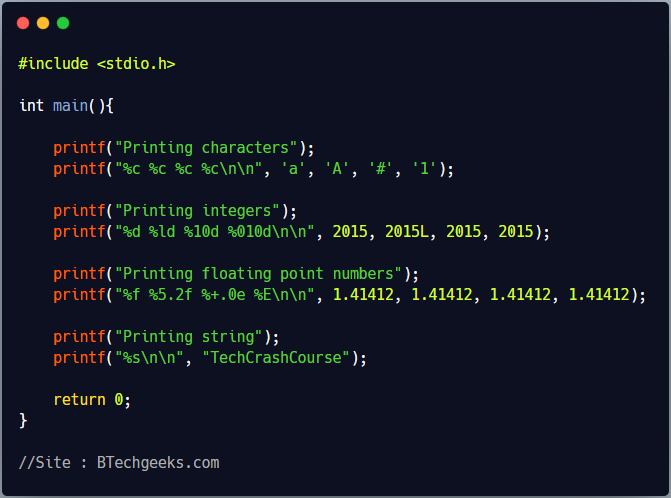


The special character sequence i means get an integer value and print its. C language is case sensitive. For example, printf() and scanf() are different from Printf() and Scanf(). Integer values may be printed to the console window using the printf function.To generate a newline,we use “\n” in C printf() statement.Similarly %c is used to display character, %f for float variable, %s for string variable, %lf for double and %x for hexadecimal variable.We use printf() function with %d format specifier to display the value of an integer variable.In C programming language, printf() function is used to print the (“character, string, float, integer, octal and hexadecimal values”) onto the output screen.We have to include “stdio.h” file as shown in below C program to make use of these printf() and scanf() library functions in C language.The syntax of printf () method becomes as follows then: Syntax: printf ('d', variableOfIntType) Hence, the integer value is successfully read and printed. Syntax: printf ('X', variableOfXType) For an integer value, the X is replaced with type int.

ret: is an integer telling how many characters PRINTF actually printed out. Supposed you want to print a integer which take minimum 7 space,then you can use 7d in the printf.for example if you want to display the integer 15,then. printf() and scanf() functions are inbuilt library functions in C programming language which are available in C library by default. These functions are declared and related macros are defined in “stdio.h” which is a header file in C language. char str10 int n printf(type a string: ) scanf(s d, str, &n) printf(sn, str) printf(dn, n). The printf () method, in C, prints the value passed as the parameter to it, on the console screen. Usage: B: ret printf( unit, format, arg1, arg2.Get more detail about structure in C programming.


 0 kommentar(er)
0 kommentar(er)
